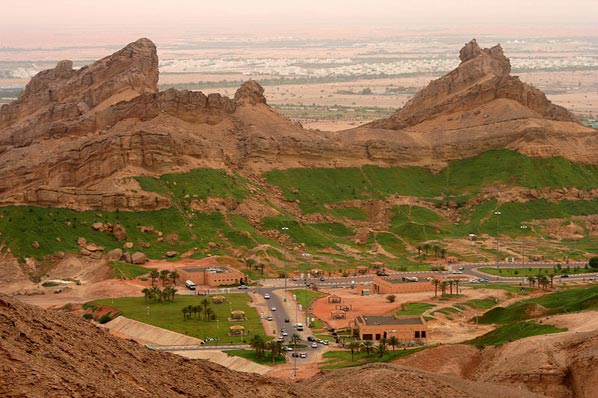Abu Dhabi showcases oasis city of Al Ain
UNESCO world heritage inscription, deep-rooted cultural experiences and an appealing natural environment have been identified as development levers in for tourism progression in the oasis city of Al Ain – the heritage heartland of Abu Dhabi emirate.
During a two-day fact finding mission organised by Abu Dhabi Tourism & Culture Authority, 15 destination management companies and cruise excursion operators operating within the United Arab Emirates, singled out opportunities to develop tours and experiences which would create a ‘sense of place’ reflecting Al Ain’s natural landscape, historic significance and cultural origins.
“Diversity of product and an ever-increasing range of creative industry packaging based around the city’s historic and world heritage site attractions is essential to maximise tourism’s contribution to Al Ain’s economic diversification,” said Sultan Al Dhaheri, acting executive director tourism, TCA Abu Dhabi.
“Insight from our trade partners helps us understand how to better benefit from our efforts to build awareness of Al Ain’s attractions, and how jointly will can strengthen the visitor proposition by shaping compelling visitor experiences,” he added.

Views over the city of Al Ain
During the whistle-stop tour, the operators traversed time to see how early civilisation shaped Al Ain’s development.
They visited the neolithic tombs in the foothills of Jebel Hafeet heights and the bronze age settlement remains at Hili Archaeological Gardens.
They also toured the Al Ain Palace Museum – former home of ‘Father of the Nation’, Sheikh Zayed Bin Sultan Al Nahyan – the picturesque Al Jahili Fort and archaeological displays at the Al Ain National Museum which catalogue the city’s unique heritage and history.
Roy Michael, field manager for Hala Abu Dhabi, Etihad Airways’ DMC arm, said the city has much to recommend itself to tourists.
“We design our tours to tell the story of a country rich in culture and traditions and the heritage village at Al Qattara fort is exactly what tourists want as an introduction to understand how Emiratis lived and adapted to their environment.
“The opportunity to emphasise Al Ain’s designation as a UNESCO World Heritage site offers significant tourism potential.
“In addition, further infrastructure development in access, facilities and interpretation, as well as co-ordinated visits to sites such as the Jebel Hafeet tombs and the remains at Hili Archaeological Gardens, will help tell the story of the emirate’s early civilisations, add depth to visitor perceptions and help manage the conservation of these sites.”
Regarded as one of the world’s oldest continually inhabited settlements, Al Ain is surrounded by the towering rocky heights of the Hajjar mountains, is fed by natural springs and home to lush palm plantations that have provided a source of food and shelter for civilisations dating back over 7,000 years - leading to UNESCO World Heritage status for five sites across the city in 2011.
Al Ain’s geography and natural environment are also strong selling points according to Mustafa Volkan Lena, Tour Guide Team Manager for Dubai-based Arabian Adventures.

